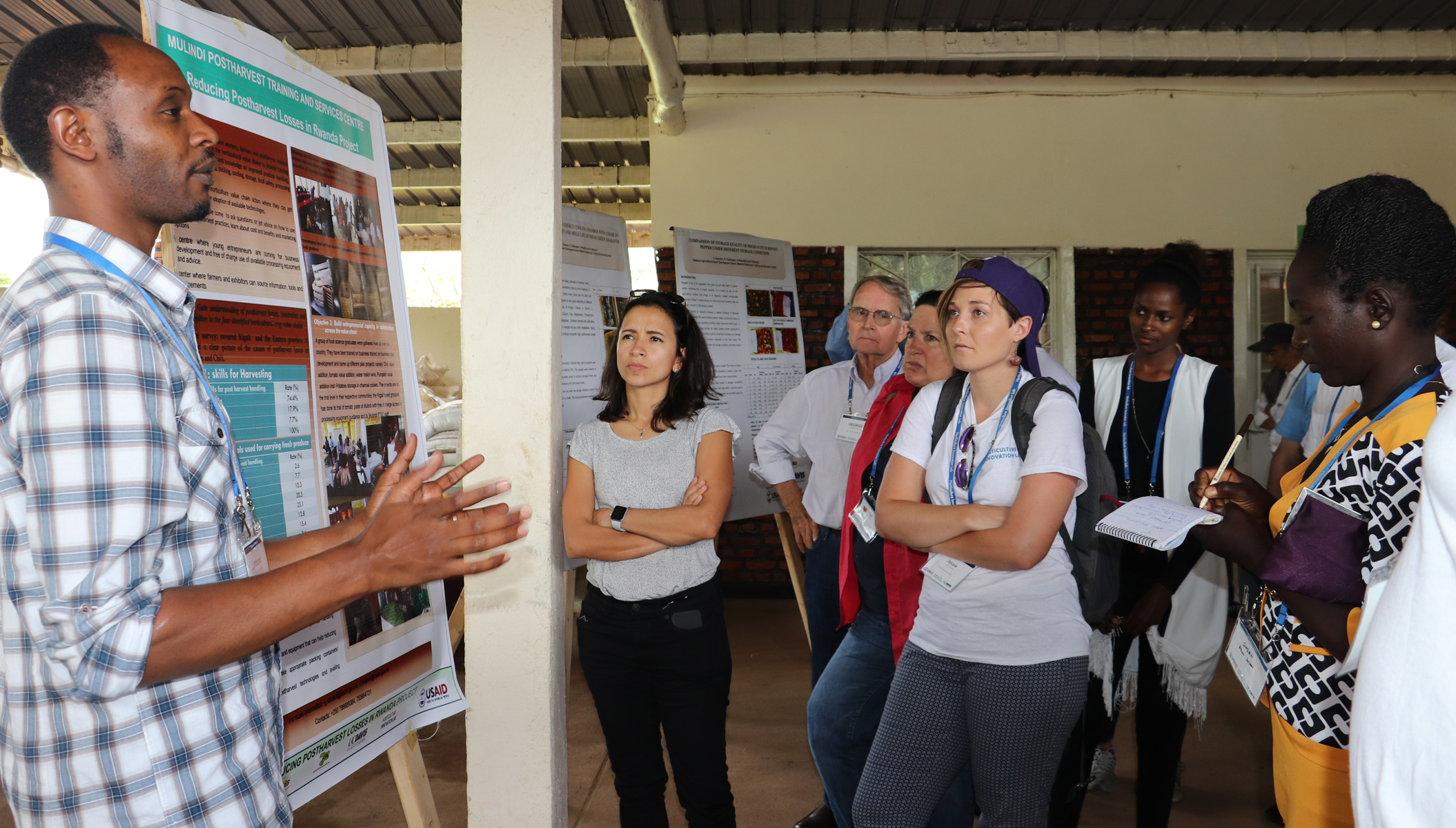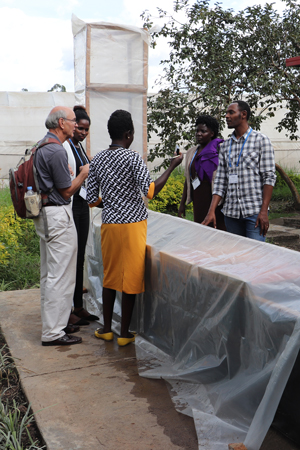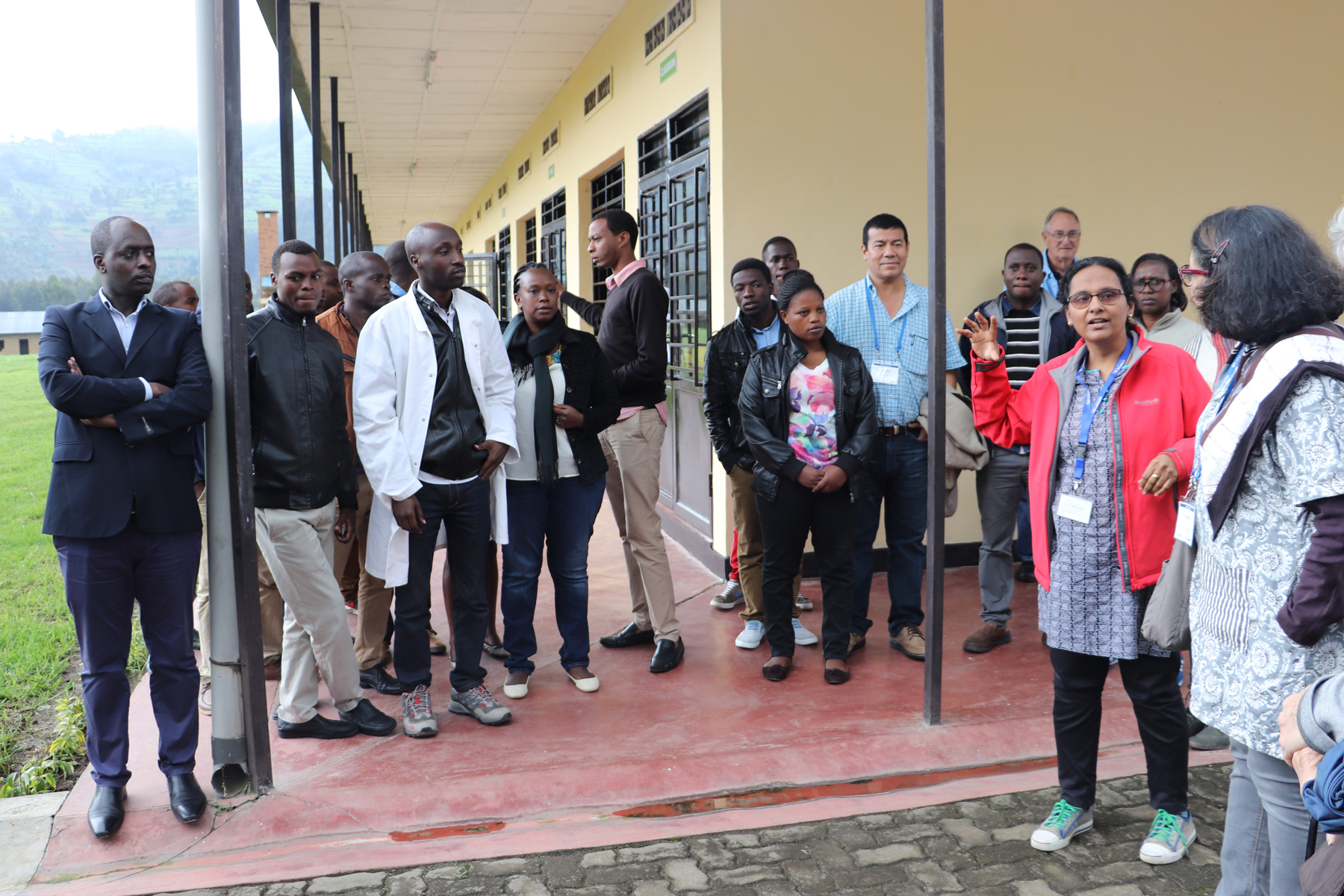
by Rashmi Ekka
As part of the Horticulture Innovation Lab project focused on reducing postharvest losses in Rwanda, a team from Agribusiness Associates partnered closely with colleagues with the Rwanda Agriculture Board (RAB), National Agricultural Development and Export Board (NAEB), University of Rwanda (UR) and Postharvest Education Foundation (PEF).
Through this deep partnership with critical Rwandan partners, the project aimed to develop Rwanda’s agricultural capacity in postharvest knowledge and technologies. As part of that process, the team built three Postharvest Training and Services Centers in different parts of the country, each housed within a partner’s campus. RAB hosts a postharvest center in Rubona in southern Rwanda, NAEB’s center is in Mulindi in central Rwanda, and UR’s center is in Busogo in the north.
Here are five key steps we think create a successful Postharvest Training and Services Center:

1. Create a welcoming space – The postharvest center should be a welcoming space that is open to all types of visitors. Our centers are regularly visited by farmers, exporters, traders, students and local authorities. Every single visitor is offered a tour of the center and is supported with any assistance they request. Centers can also have vegetable gardens.
2. Demonstrate technologies – The centers should demonstrate a range of postharvest technologies that are displayed in an interactive manner. Technologies at our centers include the zero energy cool chamber (ZECC), clay pot-in-pot, solar dryer, cold room, DryCards and processing equipment.
3. Hold regular knowledge sharing events – The center can become a hub of knowledge sharing with regular knowledge events like trainings and workshops that bring together different market actors at the center. The trainings can include demonstrations of cost-effective, small-scale postharvest handing practices, facilities and equipment.
4. Offer the center as a location for workshops by researchers and entrepreneurs – The center’s facilities should be open for use by researchers and entrepreneurs. For example several entrepreneurs have used our centers’ processing kitchens for product development.
5. Offer the services of the center to market actors – Growers, traders and exporters can use the services of the Center for a small fee that can increase the sustainability of the Center. For example an exporter uses the cold room at the Mulindi center and pays for the electricity fees.

Editor’s note: The Postharvest Training and Services Center (PTSC) model was first piloted by an earlier Horticulture Innovation Lab project led by Dianne Barrett, which established a PTSC at the World Vegetable Center’s regional office in Arusha, Tanzania. In addition to the three PTSCs opened in Rwanda, other Horticulture Innovation Lab teams have also borrowed aspects of the PTSC model for regional centers and horticulture centers in other countries.
The Horticulture Innovation Lab recently completed its project focused on reducing postharvest losses in Rwanda, led by Agribusiness Associates in close partnership with Rwandan agriculture professionals. Find additional project information such as research findings, fact sheets, training materials, and partner organizations or explore the Horticulture Innovation Lab’s postharvest-related resources.
